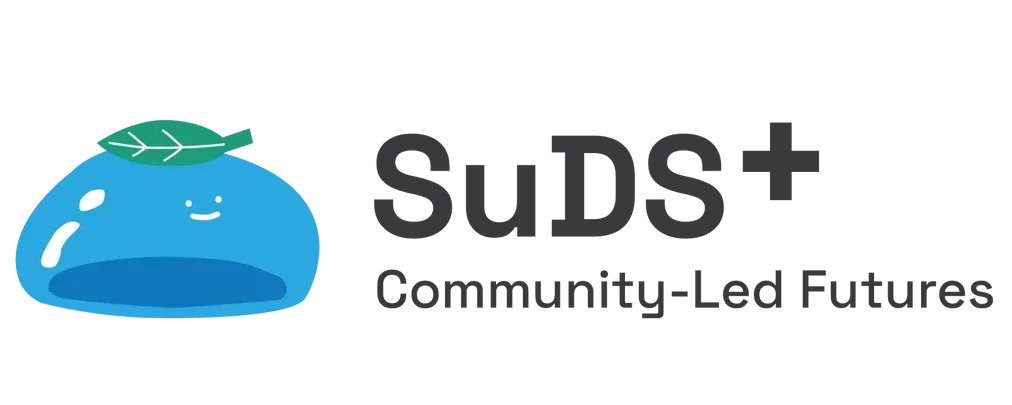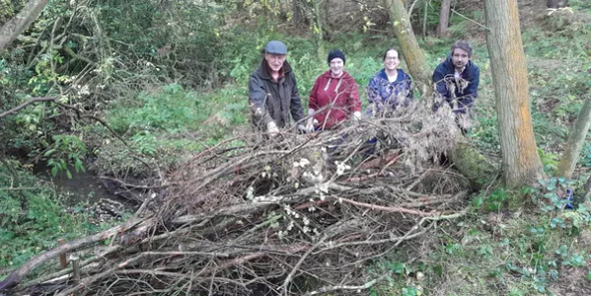Worldwide Conversation on Water, Community Action and Resilience

Eleanor Starkey shares her reflections from the recent Citizen Science for Water (CS4Water) 2025 Conference in Delft, Netherlands.


The CS4Water Conference marked a major milestone. It was the first global gathering dedicated entirely to citizen science for water. Held from 3–5 June 2025 at Delft University of Technology (TU Delft), it brought together practitioners, researchers, policy makers, and community activists from around the world. CS4Water provided a space for lived experience and fresh thinking, and the dissemination of real-world stories showing how community-led science is reshaping water governance worldwide.
I attended on behalf of the SuDS+ project, seeking connections with our work on sustainable drainage, urban water stewardship, and grassroots-led innovation. I didn’t come home empty-handed. Having specialised in citizen science monitoring since 2013 as a result of my PhD, it was great to see significant progress in this field. What was originally considered a fuzzy and unreliable methodology, often met with scepticism by many professionals, is now recognised as a formal category of water monitoring and management, and is globally acknowledged by UNESCO’s Intergovernmental Hydrological Programme. It was also encouraging to hear that peers are using citizen science as a vehicle for broader sustainability and resilience objectives, rather than merely for one-way data collection.
It’s more than just data
The week began with a keynote from Prof Graham Jewitt (Institute for Water Education, Delft), reminding us that citizen science is about more than data – it’s about power. Giving communities the tools, confidence, and voice to ask the questions that matter to them. This theme echoed throughout the week.
UNESCO’s Dr Koen Verbist spoke of embracing citizen science as a formal part of the organisation’s water mandate, especially in regions with “data deserts” where gaps in monitoring hinder effective policy. He emphasised that guidance is still needed to ensure efforts are sustainable, impactful, and ethical.
The session led by Prof Uta Wehn (Leiden University) focused on advancing sustainable solutions, empowering institutions and communities, and fostering collaboration across regions. A recurring message was clear, the future of water monitoring must be co-designed. I was also able to iterate this during my own presentation, which covered the SuDS+ project.
Citizen Science Tools: From Test Kits to AI
There was plenty of practical inspiration for SuDS+ too. In South Africa, community groups are using MiniSASS (mini stream assessment scoring system), water clarity tubes, and affordable E. coli kits to monitor river health and produce local ‘state of the river’ reports. Their approach tells a story with the data, highlights pressure points and the visuals produced that speak louder than spreadsheets.

In the Netherlands, projects like Delft Meet (Delft Measures) are using citizen-run weather stations and rain gauges to track rainfall patterns in high-density areas where official monitoring is lacking. Residents are part of the science – looking after their kit, asking their own questions, and contributing to real-time data streams. The project also has rain gauges located at TU Delft’s Green Village, one of 140 projects located in a campus-based living laboratory exploring, designing and testing sustainable solutions, including urban drainage.

For those of us involved in community stormwater monitoring, HydroCrowd is extremely relevant. HydroCrowd is a citizen science project that uses a simple phone app to monitor rainfall, temperature, and relative humidity using a low-cost, community-powered approach. Conference attendees were able to download their bespoke app while visiting one of their attractive monitoring boards. CrowdWater was another app presented by the University of Zurich to improve how floods and droughts are predicted. Similarly, PULSAQUA’s Measure Mateoffers DIY water quantity and quality monitoring solutions.
Several sessions explored the potential (and pitfalls) of AI-assisted image analysis for water quality. Platforms and projects like Epicollect5, iNaturalist,RiverWatch, and new AI-based tools are making it easier to turn citizen-captured photos into useful datasets – whether it’s counting plastic in rivers or mapping habitat condition.
One of the most debated topics was the use of citizen science in policy and regulation. Can data gathered by communities be trusted by governments? Many presenters still acknowledged a “trust gap”, particularly when citizen data is seen as less rigorous. But several promising examples showed how this is changing. In Kenya and South Africa, local groups are working closely with universities and labs to co-produce data that meets national reporting standards. UNESCOs recently launched Citizens4Water Platform and accompanying data collection toolbox will act as a repository for projects, methods and guidance, helping standardise quality while making it easier to scale successful citizen science models.
Supporting Education and Co-creation
Bruna Gumiero from the University of Siena reminded us that citizen science is not only a research method, its an educational revolution. She explained how several schools involved pupils in citizen science which gave them a new perspective on local rivers, climate change, and what it means to be an activist. Bruna emphasised that pupils are engaged and prefer to experience hands-on lessons.
Projects like Waterdiertjes.nl and Drinkable Rivers demonstrate the power of young people (and their families) taking ownership of local water. Citizen science is not just about testing, it encourages thinking. It’s not just about collecting, it’s about connecting. While the Tiny Forests project plants small pockets of urban greenery, these spaces also serve as much-needed outdoor classrooms. Tiny Forest runs a citizen science monitoring programme that includes soil compaction and texture, infiltration tests, butterfly species, and tree growth monitoring.
It was also great to see links being made between citizen science, co-creation and placemaking during the week given the methodologies we are using for SuDS+. Line Barkved (Norwegian Institute for Water Research) presented her work on co-creating blue-green stormwater solutions and the Sogn Allotment case study in Oslo, Norway.
Reflections for SuDS+
SuDS+ has always valued community involvement. But CS4Water has further emphasised that citizen science is not just a means of engagement, it’s a form of water democracy. If we want sustainable drainage to become mainstream and community-led, we also need to consider building networks of local scientists, not just as volunteers, but as change-makers.
Want to know more about the conference? Explore the programme and partners here cs4water.net.







